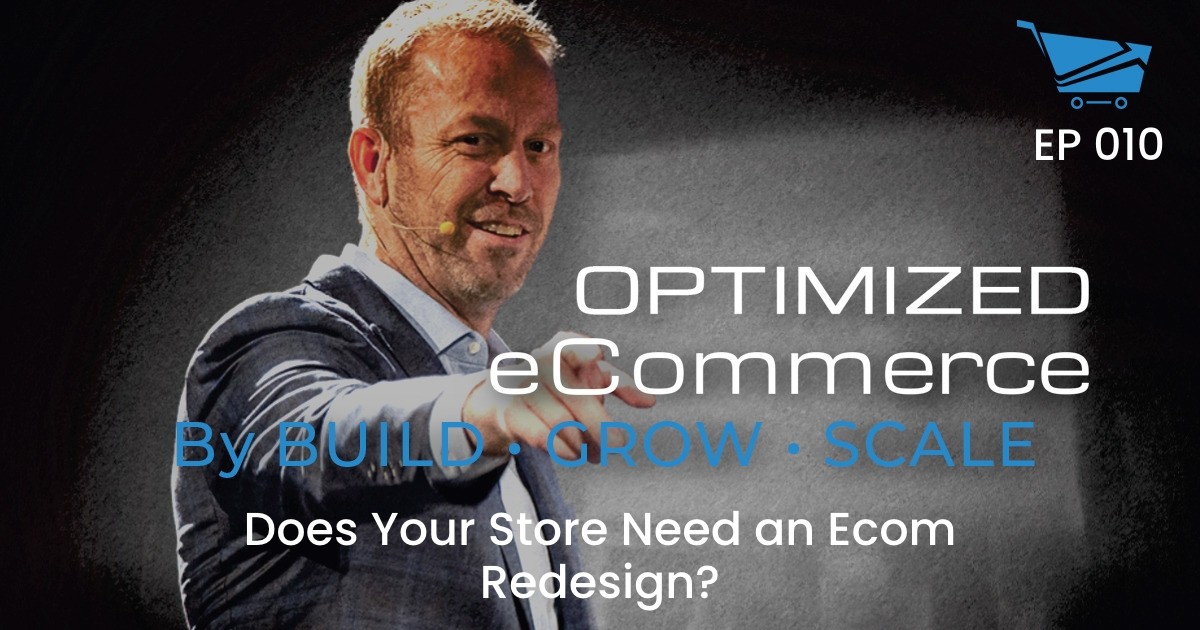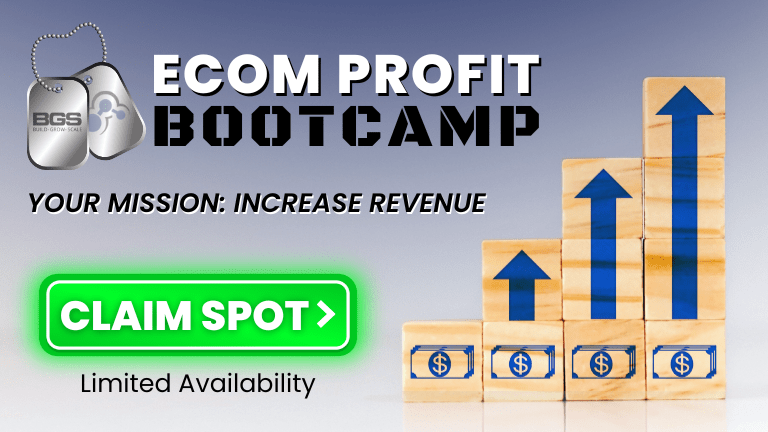Optimized Ecommerce EP 010 – Does Your Store Need an Ecom Redesign?

Welcome to Episode 010 of Optimized Ecommerce – Does Your Store Need an Ecom Redesign? We are your hosts, Tanner Larsson CEO of BGS and Matthew Stafford CMO of BGS.
BGS means Build Grow Scale! It is a community that we founded where eCommerce entrepreneurs and physical product sellers come to learn how to take their businesses to the next level.
In this episode of Optimized Ecommerce, Matt and Tanner discuss the risks of doing a site overhaul without the right data to back you up. Listen and learn how to collect and tag data the BGS way and unlock a more profitable ecommerce store!
Here’s just a taste of what we talked about today:
Are You Tagging and Collecting Data Correctly?
People assume that site design is all that BGS does but this is far from the truth. The first thing that Matt and Tanner asks whenever a new client comes along is if all their data has been tagged and if they are collecting their data correctly.
Ten times out of ten, store owners do not collect data. Or, they do not gather their data at the same level that BGS does. Store owners spend a lot of time and money redoing their sites or moving platforms. But if they are not gathering data properly, then how do they know which parts work and which ones do not?
It is simply not logical to build things on a new platform and expect it to work if the store owner does not have their data to back them up and support them.
Optimize What You Already Have in Place
A site redesign means a heap of new elements going live all at once. Typically, what happens next is that the store owner wonders which elements are working, which ones do not, why is the conversion rate dropping, and why is the add to cart going up? By then, there is no way of figuring this out.
The most important thing for online store owners is to do their data collection correctly and optimize what they already have in place.
Once those things are done, the store owner knows which elements work on every aspect of the site. Only then is it safe to move to another platform or redo their site if necessary. With data collected properly, the store owner is able to split-test effectively.
The BGS Level of Tagging Data
How do you tag your data properly?
There is an average person’s level of tagging and then there is the BGS level of tagging.
At Build Grow Scale, everything that is going on in the site is tagged — any link or image that can be clicked are tagged. Data from videos are also tagged. The data is collected on how long it is being watched, and their conversion rate. Data from drop off points are also tagged and compared with the conversion rates between the main navigation menu and the mobile version of the same menu.
We also discussed a few other fun topics, including:
- Mobile is a completely different experience from desktop. The data from these two access points must be treated differently.
- Your conversion rate on desktop is double than what it is on mobile. Your tablet conversion rate should be the same as desktop, otherwise something is broken.
- Change one element at a time. Work prototypically so you can easily determine what works and what doesn’t.
But you’ll have to watch or listen to the episode to hear about the rest!
How To Stay Connected With Tanner Larsson and Matthew Stafford
Want to stay connected with Tanner Larsson and Matthew Stafford? Please check out their social profiles below.
- Facebook: Facebook.com/buildgrowscale
- Twitter: @BuildGrowScale
- YouTube Channel: Youtube.com/windowsuccess




